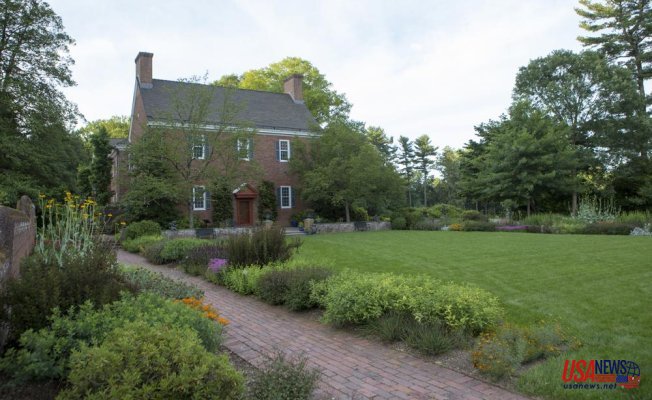They don't need much fertilizer and you rarely have to water them. You feel like Snow White when you watch the birds, bees, and butterflies gather pollen around you.
Although it may seem like a fairytale, it is possible. Planting native plants can help you make your dream garden a reality.
First, attract pollinators. They are essential for the production and growth of vegetables, fruits, and flowers. You can attract them by planting plants that will support them.
Because our native birds and insects evolved alongside native plants, they are able to recognize them as food. Native pollinators are not able to recognize non-native species, which include exotic plants from Asia and South America, Europe, and some from faraway regions in the U.S. They create food deserts for native birds, bats butterflies moths, beetles and other insects, which is essential for a healthy ecosystem.
Doug Tallamy is a University of Delaware professor of entomology and the author of "Bringing Nature home: How You Can Sustain Wildlife With Native Plants" (Timber Press 2007). He found that non-native species can disrupt the food chain which can lead to an ecosystem collapse.
He said, "Plant selection matters." The amount of life that can be found on the property should determine which plants are best for landscaping it.
When you stop and think about it, insects are the lifeblood of our existence. Without them, there would be no flowers, which would lead to the destruction of the food web that sustains vital animals. Birds, for example, depend on plants to provide food and disperse seeds. They also keep the population of harmful insects under control.
Insects are good for plants because they provide oxygen and clean water. They also capture carbon which is added to the soil to enrich it. This helps to build topsoil and prevent flooding. Tallamy states that without them, the biosphere, the living portion of the earth which includes soil, would rot due to the loss in insect decomposers. Humans simply wouldn't be able to survive.
Native plants provide food and habitat for wildlife and are easy to maintain.
This means that you will need to water, fertilize, and fuss less. The plants have been growing quite well by the side of roads, thank you, but they will also do the same in your yard.
The good news? We get to choose what we plant in our gardens. Let's celebrate the 52nd anniversary on April 22nd, the first Earth Day. Let's also resolve to plant more native plants. These resources will help you get started on your journey.
Lady Bird Johnson Wildlife Center (https://www.wildflower.org/collections/): Select your state, growing conditions and desired plant attributes, and view database results of appropriate native plants. Browse the state-recommended plant species.
The Biota of North America Program (http://bonap.net/fieldmaps): Click on your state, and the search will generate a list of native plants, which can be drilled down to the county level.
The Xerces Society (https://xerces.org/pollinator-conservation/pollinator-friendly-plant-lists): View and print out state fact sheets of recommended native plants that are attractive to pollinators and suited for small-scale plantings such as in home gardens.
Audubon Native Plants Database (https://www.audubon.org/native-plants): Enter your zip code to view a list of the best native plants to attract specific birds in your area.
The cooperative extension office in your county should also be able point you in the right direction.












